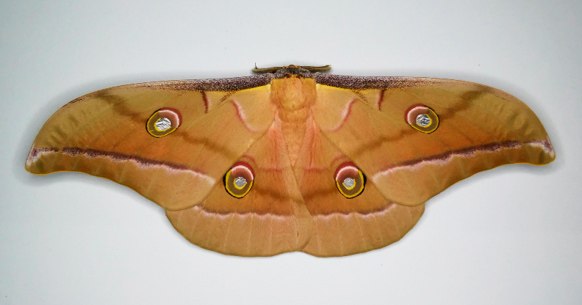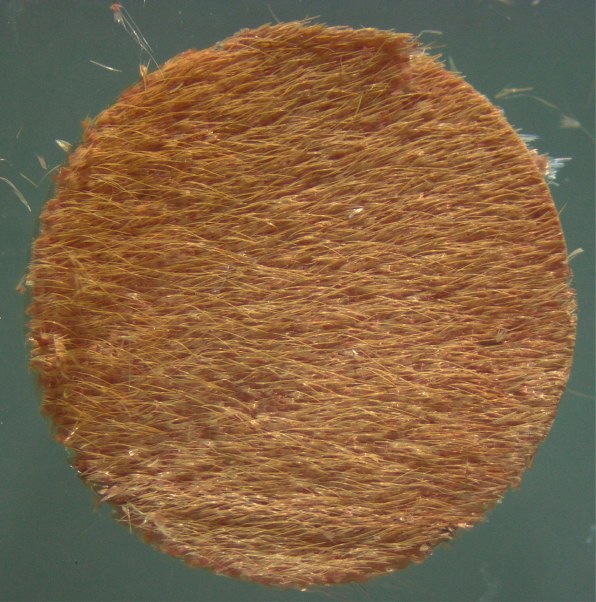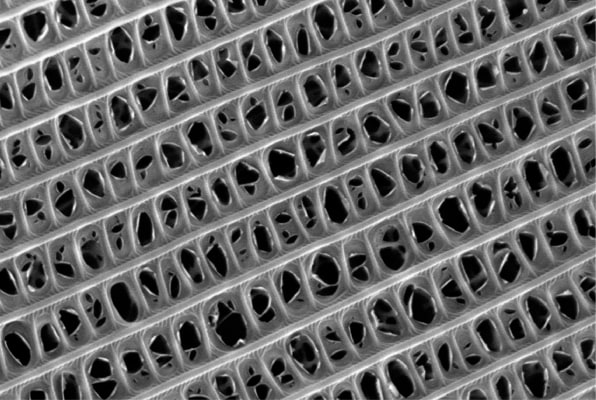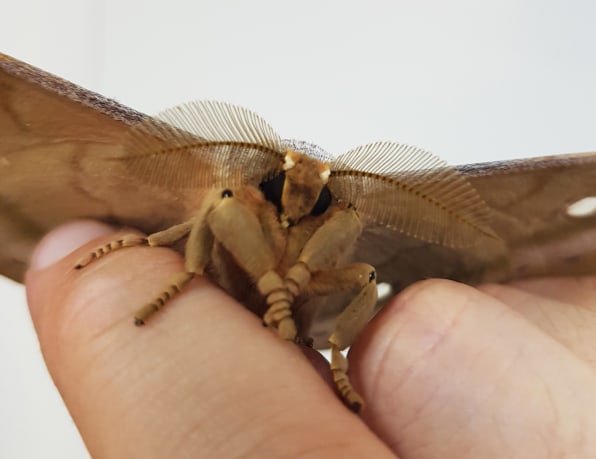- | 2:00 pm
A 250 million-year-old insect could inspire an ultrathin wallpaper that absorbs sound
The furry, sound-absorbent wings of deaf moths could be key to acoustic materials of the future.

About 65 million years ago, right around the time dinosaurs went extinct, bats evolved the ability to echolocate. They would produce clicks with their mouth or nose and listen for echoes of those clicks bouncing off surfaces and animals in the dark. Bats were major predators of moths, so many moths evolved ears that are sensitive to that echolocation—but not all of them.
Some species, like furry silk moths, never grew ears. Instead, they used another defense mechanism that was already at their disposal: sound-absorbent wings.

The existence of what is now known as “acoustic camouflage” was discovered in 2018, when a team of researchers at the University of Bristol found that furry moths have a coating on their wings that can absorb up to 85% of the sound that hits them, making it hard for bats to locate them because their calls would be poorly reflected.Now a new study from the same team suggests that these moth wings could inspire a new type of ultrathin acoustic material that would work as wallpaper and be 10 times thinner than what’s currently on the market.
This isn’t the first time humans have turned to nature for solutions. While groundbreaking, the design of the wallpaper is part of an existing field known as biomimicry, or the act of imitating nature’s design and processes in man-made systems. Examples include bird-safe glass inspired by the UV-reflective strands in spider webs; cooling vents inspired by termite mounds; and, of course, plane wings modeled after birds.
Moths evolved 250 million ago, or about 200 million years before bats. According to Marc Holderied, a professor of sensory biology at the University of Bristol and coauthor of the new study with Thomas Neil, deaf furry moths had scales on their wings even before the bats arrived—perhaps to protect themselves from sticky spider webs. So all they had to do was adapt their function.

The scientists knew that earless moths had to rely on their acoustic wings for survival, but how exactly that works took them six years to figure out. The trick, says Holderied, is in a fine dust that sits on their wings.
Under a microscope, that dust looks like a collection of tiny overlapping scales akin to a complex roof tile pattern. When a sound hits those scales at the right frequency (more on that in a bit), the scales start to vibrate. By vibrating, they take the sound energy out of the air and transform it into mechanical energy that will eventually be damped down and turned into heat. This process is known as resonant absorption.
This is where sound frequency comes into play. Every sound frequency has a wavelength. For traditional acoustic materials to work, they need to be as thick as one-tenth of the wavelength, Holderied says. So, for sounds that have long wavelengths—like the constant buzz of an airplane, or the background noise in a loud restaurant—we need acoustic materials that are thick (think several inches) and porous enough to disperse a sound wave when it hits them.

By contrast, resonant absorbers can be as thick as one-hundredth of the wavelength they’re trying to stop. “That opens loads of opportunities for us as humans to try and understand the mechanism that evolution has given these moth wings, and turn it into something that’s useful for us in our hearing range,” Holderied says.
The new material could work a bit like an ultrathin wallpaper fabric applied to a variety of surfaces, from office walls to the seats of an airplane.
“We’re talking about something that measures millimeters rather than centimeters,” Holderied says, noting that resonant materials would be much more efficient than the porous materials used in traditional acoustics. And when a material is thinner, he says, it would also be lighter, which could, for example, help reduce the overall weight of the plane and save on fuel.

Holderied’s team is working on several prototypes made of something called a metamaterial. These engineered materials are made from a multitude of cells; in this case, scales that would mimic how moth wings work. He couldn’t share the exact materials that would make up the larger metamaterial, but says the first prototypes, which are 4-by-4 inches, feature existing materials like silicon and other things that are easy to manipulate.
The challenge now is to translate the concept so it works for the human audible range. In this particular study, the scientists used ultrasound signals that are above the range that can be heard by humans, but Holderied says the size of each scale on the metamaterial could help dictate the kind of sounds it can absorb.
It will likely be a few years before any new material hits the market, but if and when it does, it will be the culmination of 250 million years of work.








































